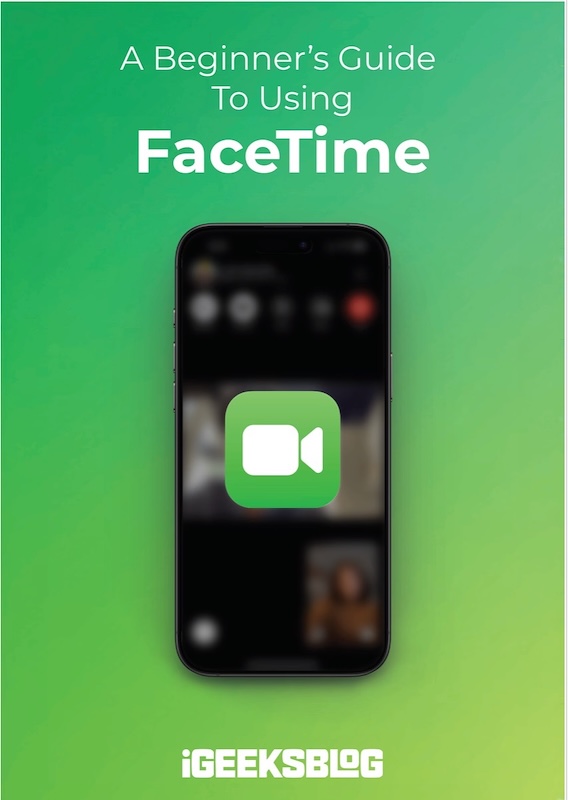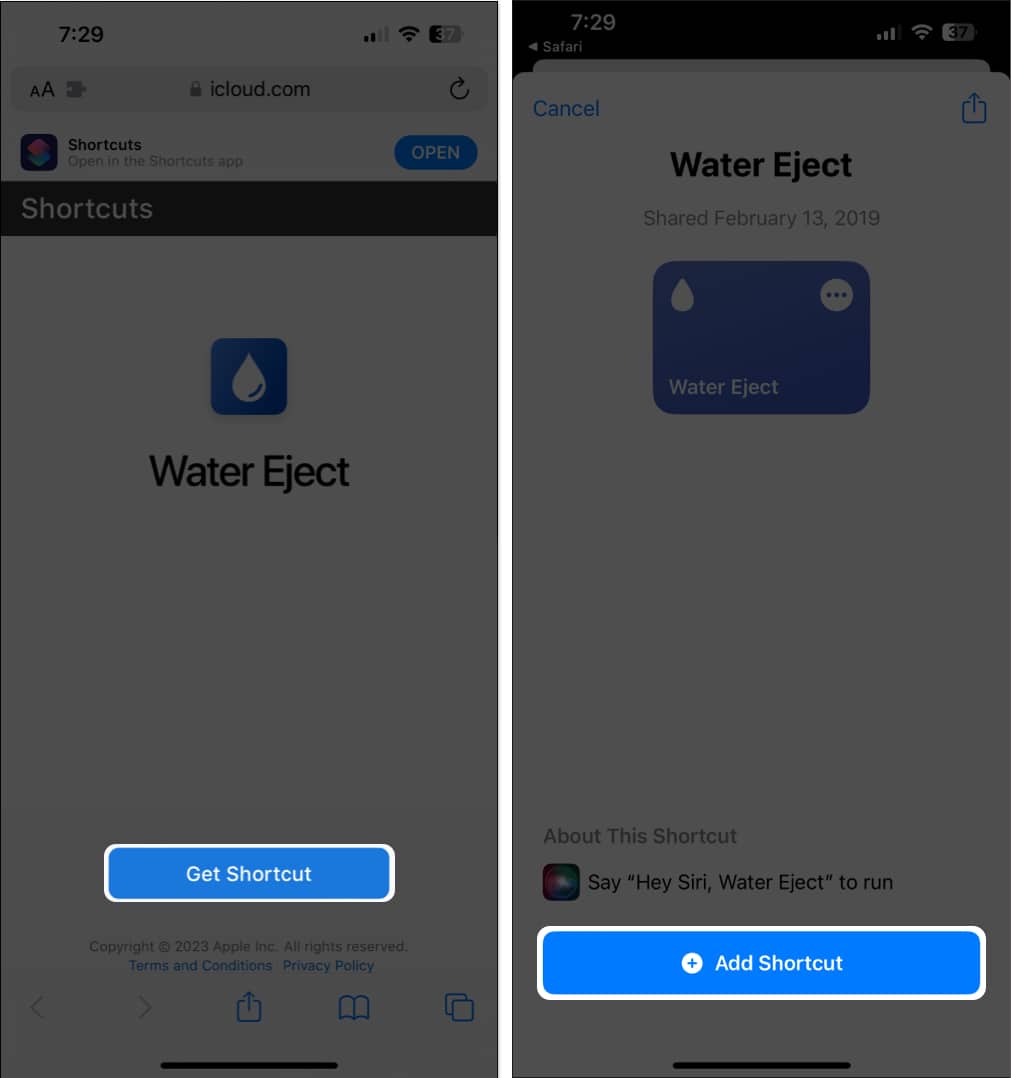
FaceTime Like a Pro
Get our exclusive Ultimate FaceTime Guide 📚 — absolutely FREE when you sign up for our newsletter below.

FaceTime Like a Pro
Get our exclusive Ultimate FaceTime Guide 📚 — absolutely FREE when you sign up for our newsletter below.
Simple steps to remove water from your iPhone speaker by yourself.
iPhones are rated IP68 and can be submerged in 6 meters of water for up to 30 minutes. Despite this, when they encounter rain, spills or are accidentally dropped into a pool, water can still get into their speaker grills. This water can muffle your iPhone audio, and leaving it to dry inside the speaker can cause severe damage. Also, you can’t claim a warranty, free support, or replacement in case of water damage. If you need help tackling this situation, I’ll show you how to get water out of iPhone speakers using four different methods.
It is important to pay attention to any signs that water has entered your iPhone speaker. This will help you take quick action and avoid spending a lot on repairs. Below are some of the ways that you can tell whether water has reached your iPhone speaker.
As soon as you notice any of these symptoms, try to address these issues promptly. Let’s understand briefly why you must eject water out of your iPhone speaker.
Removing water from your iPhone’s speaker is crucial for several reasons:
Now that you understand the importance of prompt action to remove water from the iPhone speaker, let’s see how to do it.
Before you try to get water out of your iPhone, you should be mindful of a few things.
With your iPhone clean and dry, let’s explore the workarounds for getting water out of your iPhone speakers. I have outlined four solutions, including using Siri Shortcut, a tone generator app, etc. However, the Siri Shortcut was the sure shot to remove water from my iPhone speaker.
Unlike the Apple Watch’s Water Lock feature, which ejects water if it somehow seeps in, iPhones don’t have a similar feature built-in. You do, however, get the Shortcuts app, which we can use to run the Water Eject shortcut to eject water out of iPhone speakers.
Water Eject is one of the best iOS shortcuts that uses a low-frequency sound to remove water from the iPhone speaker grills. It relies on the principle of sound waves, where the ultra-low 165Hz frequency tone causes the water molecules to vibrate and eventually get pushed out of the speaker.


If you prefer using an app to avoid shortcut setup, there are apps like Sonic or Water Eject Speaker Cleaner that you can use instead. They make sounds until the water is removed and your iPhone is dried.
I will use the Sonic Tone Generator app to demonstrate the process. It can generate sine wave sound tones and lets you precisely adjust the frequency. Besides, it has dedicated speaker cleaning sessions to help quickly eject water from iPhone speakers.

The easiest way to fix iPhone speaker water damage is to use a tone generator website. Such websites make sounds that shake the water out of your iPhone’s speakers.
I tried it on my iPhone, and it worked! Just play the sound and listen for a crackling noise.

As I mentioned earlier, Apple has forbidden rice from being used to remove water from the iPhone speaker. However, you may use silica gel packets to absorb moisture from the speaker grills. Silica gel beads are well-known for their ability to absorb moisture. You may have seen their packets in shoe boxes.

In our case, place your iPhone in an airtight container with a few silica gel packets and leave it for 24-48 hours. Ensure your iPhone is switched off and the speaker is facing down inside the container. The beads will gradually draw out and absorb the water from the speaker.
If you see that the packets have been saturated or that moisture is still apparent, you may need to add extra packets to guarantee proper drying. Once the waiting period is over, turn on your iPhone and test the speaker to see if the sound quality has improved.
If the DIY methods don’t yield the desired results or if you’re unsure about attempting to remove the water yourself, visiting an Apple service center is a wise option. The trained personnel at Apple possess the know-how and specific tools to safely remove water from your iPhone speaker.
Technicians will run diagnostic tests to determine the extent of the water damage and identify any other affected components. They may partially disassemble the iPhone to access the speaker and other internal parts and use advanced drying techniques.
Alternatively, if the speaker or other parts cannot be repaired, the technician may suggest a replacement to restore your iPhone to an operational state.
Getting water out of your iPhone speakers is straightforward with these methods. If you need further help, feel free to drop a comment below, and I’ll be happy to assist!
FAQs
Certainly, there is hope for recovering speakers from water damage most of the time, but this is mostly determined by how bad the damage is and how soon you react. For example, utilizing basic drying methods like tone generators or silica gel packets can help restore speaker operation. Nevertheless, leaving your iPhone wet for too long may result in rusting of internal parts or short-circuiting. In such situations, repairs and speaker replacement is the last resort.
Usually, water-damaged phone speakers exhibit low sound outputs, which often need clarification. Also, you may find that the sound is absent from the specific speaker. If you detect any of these indications after your phone is exposed to water, then there is a possibility that this speaker was damaged by liquid intrusion.
The most common way to remove moisture from a mobile phone is to place it in rice; however, this practice is ineffective. Although rice has absorbent properties, it cannot draw out all the water inside your phone. Small particles or dust from the rice can also enter your phone’s ports and openings, potentially causing additional issues. So, do not use this method.
The amount of time it takes for a phone speaker to dry depends on how much water it has been exposed to and the technique employed. Effective methods usually show that a phone speaker takes between 24 and 48 hours to dry completely. However, if the water exposure is too much, it may take more time, and there is an increased chance of irreparable damage as well.
No, you should not use a hair dryer to dry out your phone’s speaker. The hair dryers produce a lot of heat that can damage your phone’s internal components. Avoiding heat sources while drying out a wet phone is always good. The air throw may force some water further into the device instead of removing it.
If the water exposure is minimal, your phone can dry out on time. However, there are better options than relying on this method. Natural drying can take several days, during which moisture may remain inside the device and cause corrosion or long-term damage to internal components. It is better to actively assist the process using the methods mentioned above.
Some more iPhone troubleshooting guides: